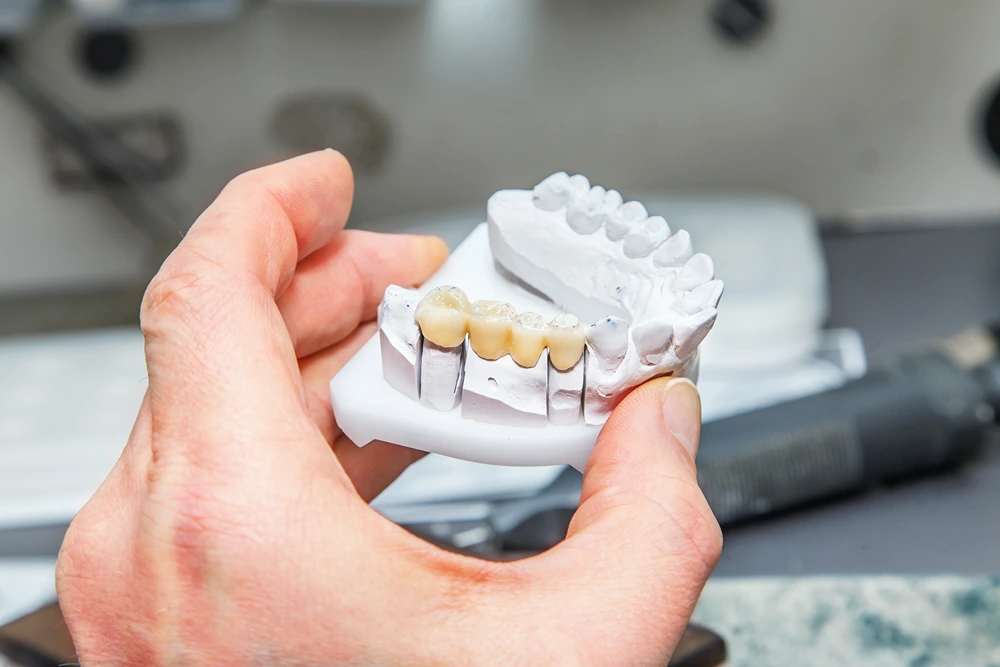How to Identify the Early Signs of Separation Anxiety in Adults
When most people think of separation anxiety, they picture a tearful toddler clinging to their parent’s leg on the first day of preschool. However, this condition isn’t limited to childhood. Separation anxiety in adults is a real and often overlooked mental health challenge that affects the adult population in the United States.
This can significantly impact relationships, careers, and overall quality of life. Understanding the early warning signs is crucial for timely intervention and treatment.
Understanding Adult Separation Anxiety Disorder: Beyond Childhood Concerns
Adult separation anxiety differs significantly from normal attachment concerns. While it’s natural to miss loved ones or worry about their safety occasionally, separation anxiety disorder involves persistent, excessive fear and distress that interferes with daily functioning.
The Evolution of Separation Anxiety from Childhood to Adulthood
Separation anxiety manifests differently across the lifespan. Children typically express their distress through tantrums or school refusal, while adults might exhibit more subtle signs like excessive calling or texting.
Adult anxiety symptoms often include work avoidance, relationship strain, and sophisticated emotional masking. Interestingly, research shows that about 77.5% of adult separation anxiety cases begin in adulthood rather than persisting from childhood, challenging the misconception that it’s merely a childhood condition that wasn’t outgrown.
The Attachment Spectrum: When Normal Concern Becomes Clinical Anxiety
Distinguishing between healthy attachment and problematic anxiety can be challenging. Healthy attachment involves missing someone while still functioning well, whereas separation anxiety disorder creates significant distress and impairment.
Attachment styles formed in early life – secure, anxious, avoidant, or disorganized, play a crucial role in how adults form relationships. Those with anxious attachment styles may be more vulnerable to developing separation anxiety. The key difference lies in the intensity, duration, and impact on daily functioning.
Physical Warning Signs of Adult Separation Anxiety
Our bodies often signal emotional distress before our minds fully recognize it. For those experiencing early signs of separation anxiety in adults, physical manifestations can be the first indication that something isn’t right.
Recognizing these signs early is essential, as timely intervention through separation anxiety disorder treatments can significantly improve quality of life and emotional independence.
Physiological Responses to Anticipated Separation
When faced with actual or anticipated separation from attachment figures, the body may react with fight-or-flight responses. These can include rapid heartbeat, shortness of breath, and sweating, similar to panic attack symptoms.
Digestive disturbances such as nausea, stomach pain, or changes in appetite often accompany separation anxiety in adults. These physical reactions can be so severe that they’re sometimes mistaken for medical conditions, leading to unnecessary tests and treatments when the root cause is psychological.
Sleep Disruptions and Physical Manifestations
Sleep patterns often reflect our mental health state, with separation anxiety disorder treatments showing improvement in both sleep quality and anxiety symptoms. Individuals experiencing separation anxiety frequently report difficulty falling asleep when alone or persistent nightmares about losing loved ones.
Chronic headaches, muscle tension, and unexplained fatigue may also signal underlying anxiety. These symptoms tend to worsen during periods of separation or when separation is anticipated, creating a pattern that can help identify the condition. Physical symptoms often diminish when reunited with attachment figures, providing another clue to the underlying cause.
Emotional and Cognitive Red Flags of Developing Separation Anxiety
The mind’s response to separation anxiety can be equally telling and often more persistent than physical symptoms. These thought patterns and emotional responses serve as crucial warning signs.
Intrusive Thought Patterns About Safety and Loss
People with developing separation anxiety frequently experience recurring thoughts about potential harm to loved ones. These aren’t just occasional worries but persistent, intrusive thoughts that are difficult to control or dismiss.
Catastrophic thinking becomes common, imagining the worst possible scenarios when separated from attachment figures. For example, a person might become convinced their partner has been in an accident if they’re ten minutes late. These thoughts aren’t easily dismissed with logical reassurance and often require professional intervention to address effectively.
Emotional Dysregulation When Facing Separation
Recognizing separation anxiety includes identifying emotional overreactions to normal separations. This might manifest as tearfulness, irritability, or even anger when a loved one leaves for routine activities like work or errands.
Mood fluctuations become particularly noticeable around separations, with preliminary distress before the separation, acute distress during, and only gradual relief after reunion. This emotional rollercoaster exhausts both the individual and their loved ones. This creates strain in relationships and potentially reinforces avoidance behaviors.
Behavioral Indicators That Signal Separation Anxiety in Adults
While thoughts and feelings remain internal, behaviors provide visible clues to early signs of anxiety related to separation. These actions often serve as coping mechanisms but can create problems of their own.
Technology-Related Monitoring Behaviors
In our digital age, technology offers new ways for separation anxiety to manifest. Excessive checking behaviors, such as constant calling, texting, or location tracking, have become common symptoms.
Social media monitoring can become obsessive, with individuals checking their attachment figure’s online activity for reassurance of their safety and whereabouts. Some might require immediate responses to messages and become distressed when replies aren’t prompt, creating tension in relationships.
Avoidance and Accommodation Patterns
People experiencing separation anxiety in adults often restructure their lives to minimize separations. This might mean turning down job opportunities, avoiding travel, or refusing to engage in independent activities.
Making extensive arrangements to remain physically close to attachment figures becomes a priority. For example, someone might insist on working the same shifts as their partner or follow a child to college by relocating nearby. These accommodations might seem supportive on the surface, but reinforce anxiety and prevent healthy independence.
Relationship Dynamics That Reveal Separation Anxiety
Relationships serve as both the stage for and the mirror of separation anxiety, often revealing patterns that might otherwise remain hidden.
Attachment Figure Relationships
People with separation anxiety may become overprotective of loved ones, limiting their independence under the guise of care. This control can manifest as excessive checking in, discouraging independent activities, or even making decisions for others.
The relationship often becomes characterized by dependency, with the anxious individual struggling to function when the attachment figure is unavailable. This dynamic creates an imbalanced relationship that can breed resentment over time, despite often beginning from a place of genuine care and concern.
Impact on Secondary Relationships
Adult anxiety symptoms related to separation often lead to a shrinking social circle. Friendships may be neglected or lost entirely as the individual prioritizes time with attachment figures.
Social events become challenging without the attachment figure present, leading to declined invitations or early departures when separation anxiety becomes overwhelming. This social isolation can further entrench the problem, limiting support systems and increasing dependence on primary attachments.
Professional and Social Functioning Warning Signs
Separation anxiety doesn’t stay contained within personal relationships—it spills over into work, education, and broader social contexts.
Career Impact and Work Patterns
Career advancement often suffers when separation anxiety limits mobility and independence. Individuals might turn down promotions requiring travel or relocation that would separate them from attachment figures.
Productivity and focus can deteriorate during periods of separation, with thoughts constantly returning to concerns about the attachment figure’s well-being. Remote work arrangements might be sought not for convenience but to remain physically close to loved ones, potentially limiting professional growth and opportunities.
Social Withdrawal and Dependency
Gradual withdrawal from social activities that don’t include attachment figures is a common early sign of anxiety related to separation. What begins as a preference evolves into an inability to enjoy events without specific people present.
The person increasingly relies on attachment figures for emotional regulation, turning to them exclusively for comfort during distress rather than developing broader coping mechanisms. This dependency creates a fragile emotional state where well-being becomes contingent on another person’s presence.
Recognizing the Signs and Seeking Help
Understanding the early warning signs of separation anxiety in adults is the crucial first step toward healing. From physical symptoms like sleep disruption to behavioral patterns like excessive monitoring, these signs offer valuable clues that something deeper is happening.
If you recognize these patterns in yourself or someone you care about, know that effective help is available. Cognitive-behavioral therapy has shown particular promise in treating adult separation anxiety, along with other approaches like mindfulness training and gradual exposure therapy.
Remember that seeking help isn’t a sign of weakness but of courage, the courage to acknowledge a struggle and take steps toward a more balanced, fulfilling life with healthier attachments.
Your Questions About Separation Anxiety in Adults Answered
How can adults overcome separation anxiety?
The most effective approach is cognitive-behavioral therapy (CBT), which helps identify and change thought patterns driving anxiety. Gradual exposure to separations in a controlled way, developing independent coping skills, and sometimes medication can create significant improvements in quality of life.
What is the 3-3-3 rule for anxiety?
The 333 rule for anxiety is a grounding technique to use during anxious moments. It involves identifying three things you can see, three sounds you can hear, and moving three parts of your body. This simple practice helps redirect attention from anxious thoughts to the present moment.
How is separation anxiety disorder diagnosed?
Diagnosis typically involves a comprehensive assessment by a mental health professional. They’ll evaluate symptoms against diagnostic criteria, examine how symptoms impact daily functioning, rule out other conditions, and likely use standardized questionnaires to assess anxiety severity.











